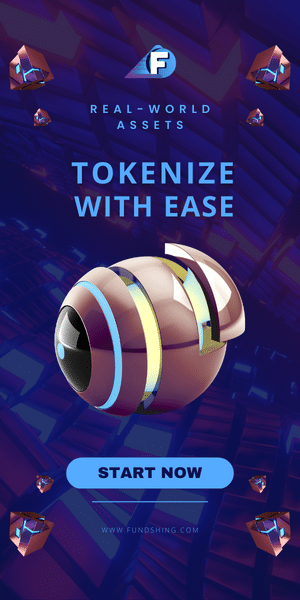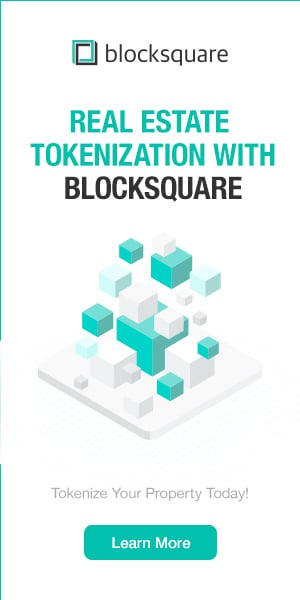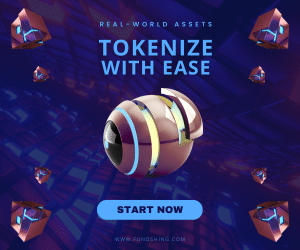Driving the industry of tokenization – PART THREE
– An interview in three parts with the founder and CEO of Maker, Rune Christensen.
On 18 November Maker DAO launched their long-awaited Multi Collateral Dai (MCD). In this comprehensive interview in three parts founder and of Maker, Rune Christensen, explains why MCD is not only a next-level stable coin system but is likely also to become one of the most important drivers for the tokenization industry.
Click to read PART ONE and PART TWO.
All assets to be tokenized eventually
In this Part Three, Rune Christensen points out examples of good and bad tokenization projects and talks about his expectation for the industry going forward. He expects that “in the long run all assets will be tokenized.”
Michael Juul Rugaard (MJR): Seen from the perspective of the potential of MCD (see part one and part two of this interview) and the development in blockchain and tokenization in general, are you an optimist or a pessimist on behalf of the security token industry? I am talking with a lot of people working in the space, and many of them seem to be somewhat impatient. They want the development of the industry to accelerate much more, but I mean developing a wholly new and regulated industry obviously takes time…
Rune Christensen (RC): Generally, I am very optimistic about the trend of tokenization, and I believe that in the long run, all assets will be tokenized. At some point, everything, like all records of ownership – or at least almost all records of ownership – will move onto the blockchain because it is more efficient.
But yeah, I think it will happen very slowly, and as a result, I believe that a lot of the security token projects we see today are not going to make it. I mean, you can be optimistic in the long run and still be pessimistic about a lot of what is happening on the short term.

This has happened with every single new wave in the blockchain space. 90% of the first projects always fail. It’s always when things are the most hyped and everyone expects it to explode in popularity next year that the losers are founded – those who pursue their short time plans and then it turns out that it just doesn’t work, and then they go bust.
It’s the hype cycle, right; it’s like a natural part of innovation. A lot of the projects that we see are not very promising. Those are projects which seem to think that if you just tokenize an asset, you have a winning proposition, and that has certainly proven to be totally wrong. If all you do is to tokenize something you are likely to just making it more complicated. There always has to be that other reason beyond tokenization just for the sake of tokenization.
But this is also where I think that the Maker Protocol could be the most significant driver, and it might even be essentially the only driver in the short run. So over the next couple of years, virtually the only reason why anyone would want to tokenize anything could be so that they can use it as collateral for Maker.
However, if Maker is popular enough, and if Dai continues to grow in South America and in Asia and all the other places where the organic growth is already happening; if this trend continues, I think that might be enough to create this vacuum effect to make the security token industry successful and bringing a lot of assets onto the blockchain.
And then from there, we will see a tipping point where the network effect and the efficiency gains finally unlock, and you start to see the inherent advantage of tokenization because all the infrastructure finally will be in place.
But I can certainly see that the Maker Protocol is the first big tipping point and the primary reason to actual become tokenized.
MJR: Even though it’s still early days, I hope that you do see some good quality projects out there on the market too already now?
RC: Yes, absolutely. There are a lot of high-quality projects too. I think that overall there are more bad projects than good projects, but as I said, this has been true throughout the entire history of blockchain, but also just in tech and start-ups and innovation in general.
And in fact, it’s a good sign that there are a lot of projects not getting it right because it shows this desire to move forward within the industry and to get something done because everyone sees the potential and a lot of experimentation is going on.
Obviously, I am biased, but in my opinion, all the projects we see that are doing it right are the ones that are trying to unlock the advantage of being able to be used as collateral in Multi Collateral Dai. And having that advantage and that reason is the thing that prevents them from running out of steam.
MJR: Could you give a piece of good advice for investors who want to invest in quality STOs and quality security tokens. What should they look for, what should they be aware of?
RC: Right now, the good tokenization projects that we see typically fall into two buckets:
The first one is if you are trying to do a project about bringing a very liquid and a very well-known asset on to the blockchain, primarily so that it can be used as collateral for Maker. If you try to bring a well-known and standardized asset onto the blockchain and you are not doing it so that you can tap into Maker and DeFi, I don’t think you are going to be successful, because typically the infrastructure in the traditional world is better than anything we have in the tokenized world at this stage. So this is very important if you want to tokenize more mainstream assets.
MJR: Could you give a good example?
RC: Real estate is a good example here. There has been a lot of real estate projects that are trying to tokenize real estate just because it sounds cool. But that is not a winning business model, and I have seen a lot of those fail because it’s not appealing to someone who is used to invest in real estate to switch to a different system just so that they can do what they are already doing with systems that are working perfectly well – and even pay more money, typically.
You need that other reason, and that is where getting more efficient financing by DeFi in Maker is something that can make real estate assets more interesting.
The second category, which we think is interesting, is tokenized assets that are not currently mainstream assets and don’t have a well-developed market of infrastructure in the traditional financial system.
Those assets are less about accessing financing from Maker, although it is also a critical part of it. Those assets have to make sense on their own because if they don’t make sense inherently, it becomes very difficult to use them as collateral in Maker.
MJR: Could you give an example?
RC: A good example of this is a project called Paperchain. They are tokenizing Spotify royalties specifically targeted at small and medium success artists, so the idea is to create a way forward for artists who are successful but not successful enough to make it big in the traditional music industry. Right now there is a big gap, and if you are not a total superstar who can sign big deals with big brands it is hard to get access to infrastructure, and you have to do a lot of work yourself and put in a lot of effort to have a chance.
What Paperchain do is to unlock financing on Spotify by enabling artists to sell all or parts of their royalties through tokens because they can be tokenized very easily. Currently, there is no existing traditional market for this, so the moment you tokenize Spotify royalties you change the game because you are opening a whole new world of opportunities and possibilities with the blockchain. And that is a big contrast to real estate because when you tokenize real estate, you don’t necessarily do anything that doesn’t already exist.
MJR: Sometimes, you just make things more complicated…
RC: Yes, but with something more exotic like royalties, it is the exact opposite – you are getting a huge advantage from tokenizing it.
On top of this we are looking into advanced financing solutions that allow artists to rather than selling their royalties – and by doing so losing them forever – collateralizing them and use the collateral to finance for instance their next music album. This is something which has not been possible before. But now blockchain has made it possible, and for us in the Maker Foundation, this is what Maker and DeFi is all about.
It’s all about using the blockchain and using new technology to make an impact in the real world. That is a pretty cool way of taking blockchain beyond just crypto and speculation and into potentially the creation of new art based on blockchain technology.
Click to read PART ONE and PART TWO.
You Might also Like
























